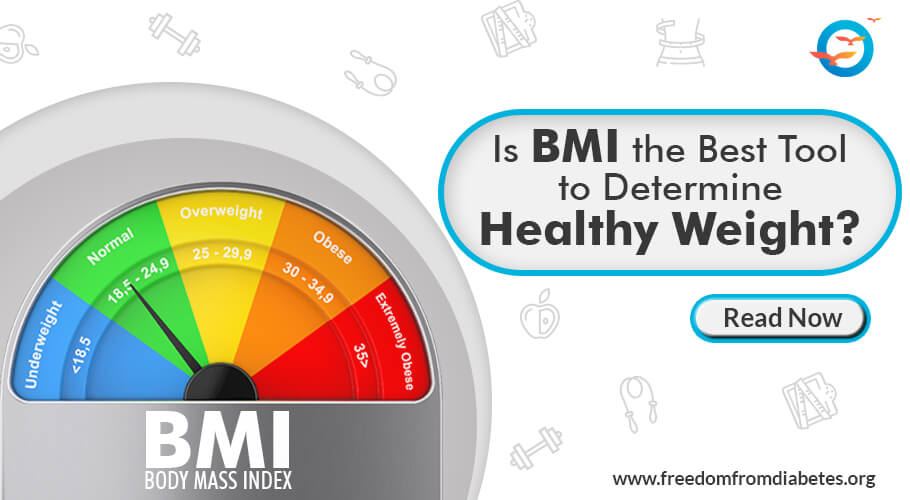Is BMI the Best Tool to Determine Healthy Weight?

The correlation of height to weight is one of the most obvious determinants of obesity. In the mid-19th Century, Adolphe Quetelet, a Belgian mathematician, devised the system of Body Mass Index (BMI) to more accurately measure this correlation.
Body Mass Index is thus the ratio to body weight (measured in kilograms) to height (measured in meters). It is a simple numerical measurement that enables the classification of people on the basis of their body composition.
The WHO today recognizes the validity of the Body mass index (BMI) and has set the following ranges to determine the distinction between being thin and being overweight or obese.
| Classification | BMI Range |
| Normal | 18.5 and 24.9 |
| Underweight | Under 18.5 |
| Overweight | 25 to 29.9 |
| Obese | 30.39.9 |
Calculate your BMI
To calculate your BMI, simply divide your weight—measured in kilograms—by your height squared—measured in meters
For instance:
If your height in 170 cm, i.e. 1.7 meters, and your weight is 65 kg, your BMI is
65/1.7 squared (2.89); viz: 65/2.89
= 22.5 kg/m2
Limitations
1. Height
The mathematics of calculating BMI by dividing weight means that it returns too large a number for short people and too small a number for taller people: short people will be rated as being thinner and tall people fatter than they actually are. In other words, it doesn’t take into account that taller people have different linear proportions (broader frames) than shorter people.
2. Muscularity
Since muscle is heavier than fat, heavily muscled people, like athletes, weightlifters, boxers, etc. by virtue of their higher muscle mass, will be adjudged overweight or obese, despite having a lean midsection. Thus BMI is not sensitive to the difference between adipose tissue and lean muscle mass.
3. Ethnicity
Ethnic origin also affects BMI, which limits its use as a risk predictor for lifestyle diseases. People of South Asian origin, for instance, are often routinely found to be suffering from diseases like diabetes despite having a normal BMI.
4. Sex
When calculating BMI it is important to consult the correct chart. BMI charts for adult males differs from BMI charts for females. This is because men tend to have more muscle mass, whilst women are often pear shaped, I.e. carry more weight lower in their body.
5. Age
BMI charts for children are not the same as for adults, as BMI changes substantially in children as the volume of fat carried varies with sex and age. For this reason BMI charts for children between two and 20 years factor in age—and gender as well.
6. Pregnancy
BMI cannot, for obvious reasons, be used as a health indicator for pregnant women.
Takeaway
While BMI is one of the most popular tools to determine body mass, it is by no means infallible. For more accuracy or health risks from excess weight or to measure weight loss, there are other measurements that are more accurate for certain adult populations.
These include measurements like Waist-to-Hip Ratio and Waist to Height Ratio (WHtR). These radios are good determinants not just for weight loss but also predictors of non-communicable chronic diseases like BP, diabetes and cardiovascular problems.
Waist to Height Ratio (WHtR)
WHtR is also one of the most accurate anthropometric indexes to screen for health risks. It factors in height, which is a proven predictor for hypertension and diabetes, and body fat percentage, which is an independent risk factor for heart disease.
By and large, in the same BMI range, people of shorter stature have noticeably plumper midsections than taller individuals. But adults with the same waist circumference measurement will not have the same body fat percentage if their heights are unequal. By factoring in the impact of waist circumference and height on body fat composition, WHtR is a good predictor of health risk.
Ideal Waist to Height Ratio (WHtR)
Ideally, your waist should measure half your height. I.e. if your height is 70 inches, your waist must not exceed 34 inches.
WHtR is also considered a more accurate tool for predicting high blood pressure compared to BMI and BMI for people with type 2 diabetes.
Waist-to-Hip-Ratio (WHR)
WHR is a quick and easy way to check how much weight you carry around your middle. Used in conjunction with BMI it is a more accurate way to evaluate your weight and health.
| Health Risk | Women | Men |
| Low Risk | Below 0.8 | Below 0.9 |
| Moderate | 0.81 to 0.85 | Between 0.9 and 1.0 |
| High Risk | 0.86 or more | Above 1.0 |
What are the advantages of using this method?
- WHR is considered a more accurate tool than BMI to predict hypertension
- A high WHR is also a more accurate predictor-- than BMI--to predict adverse outcomes in trauma patients.
How to Measure Waist-to-Hip Ratio
To calculate your WHR, follow the following simple steps:
- Exhale while standing up erect. Now using a tape measure the distance around your waist—that’s the portion around the thinnest part of your waist--above your belly button. This is your waist circumference.
- Now measure the your hips, i.e. where your hips are biggest, in other words, the widest part of your buttocks.
- Now you have the hip circumference.
- Divide the first measurement--waist circumference by the second—hips. Voila. You have your WHR.
What are the disadvantages of using this method?
- It’s not always easy to get accurate measurements on your own. Hips, especially, are difficult to measure by oneself.
- It is possible that your hips are more muscular as a result of working out, or you might have more weight in your abdomen This makes WHR harder to interpret.
WHR is not recommended in some people—if you’re below 5 feet in height or if your BMI measures 35 or more. Children too are not accurate subjects for WHR
FAQ's
What is BMI and how is it calculated?
BMI, or Body Mass Index, is a numerical value derived from a person's weight and height. It is calculated by dividing a person's weight in kilograms by the square of their height in meters (kg/m²).
What are the limitations of using BMI as a measure of healthy weight?
BMI does not differentiate between muscle and fat mass, which can lead to misclassification. It may not accurately reflect the health of individuals with high muscle mass, older adults with low muscle mass, or those with different body compositions.
What are alternative methods to assess healthy weight?
Alternatives to BMI include waist-to-hip ratio, body fat percentage measurements, and waist circumference. These methods provide a more comprehensive assessment of body composition and health risks associated with weight.

